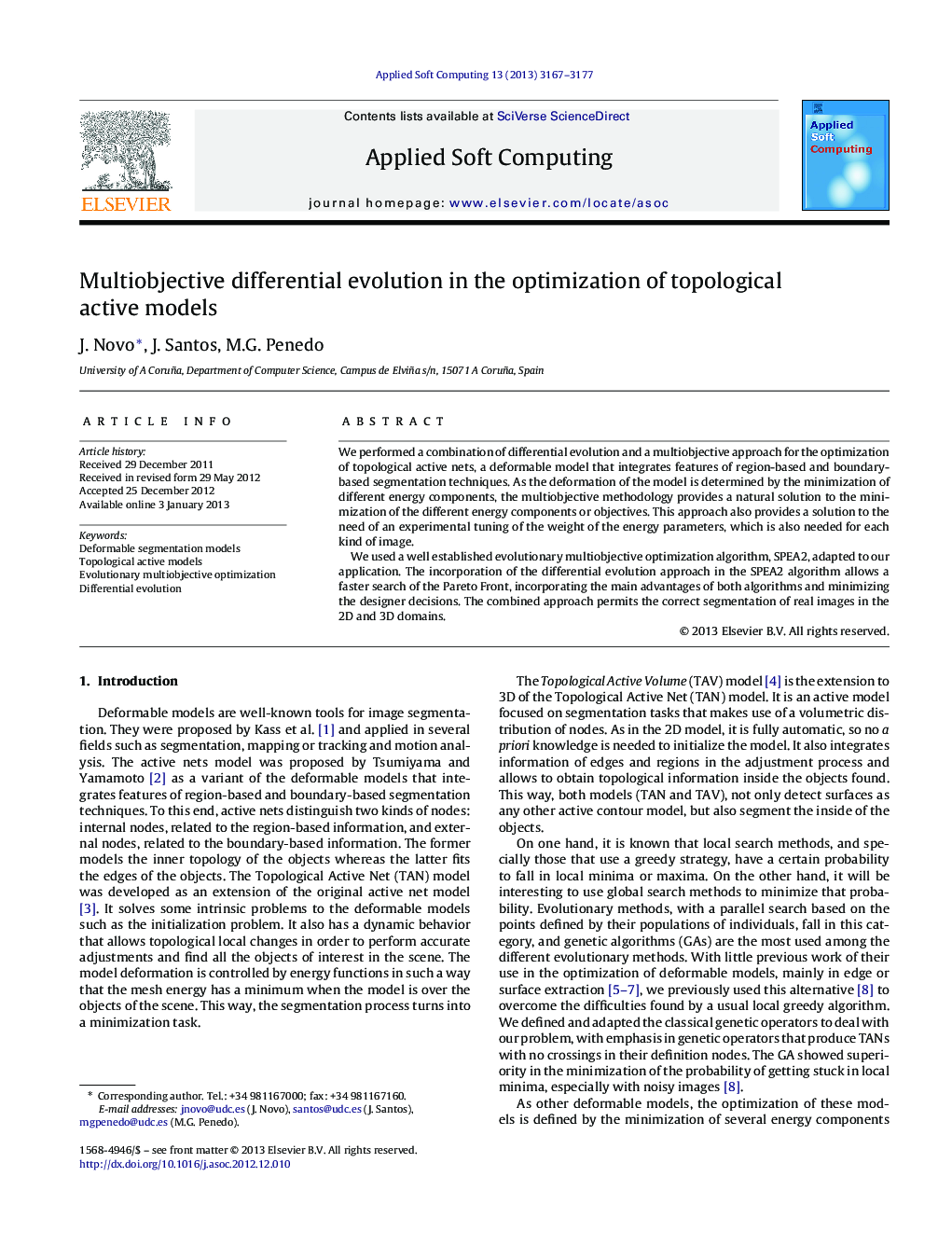| کد مقاله | کد نشریه | سال انتشار | مقاله انگلیسی | نسخه تمام متن |
|---|---|---|---|---|
| 495880 | 862843 | 2013 | 11 صفحه PDF | دانلود رایگان |

We performed a combination of differential evolution and a multiobjective approach for the optimization of topological active nets, a deformable model that integrates features of region-based and boundary-based segmentation techniques. As the deformation of the model is determined by the minimization of different energy components, the multiobjective methodology provides a natural solution to the minimization of the different energy components or objectives. This approach also provides a solution to the need of an experimental tuning of the weight of the energy parameters, which is also needed for each kind of image.We used a well established evolutionary multiobjective optimization algorithm, SPEA2, adapted to our application. The incorporation of the differential evolution approach in the SPEA2 algorithm allows a faster search of the Pareto Front, incorporating the main advantages of both algorithms and minimizing the designer decisions. The combined approach permits the correct segmentation of real images in the 2D and 3D domains.
Figure optionsDownload as PowerPoint slideHighlights
► We defined a combination of differential evolution with the SPEA2 multiobjective optimization algorithm.
► The hybrid method was applied to the optimization of topological active models.
► The MO approach allows the search of segmentations with different objectives.
► The hybrid approach allows a faster segmentation incorporating the advantages of both methods.
Journal: Applied Soft Computing - Volume 13, Issue 6, June 2013, Pages 3167–3177